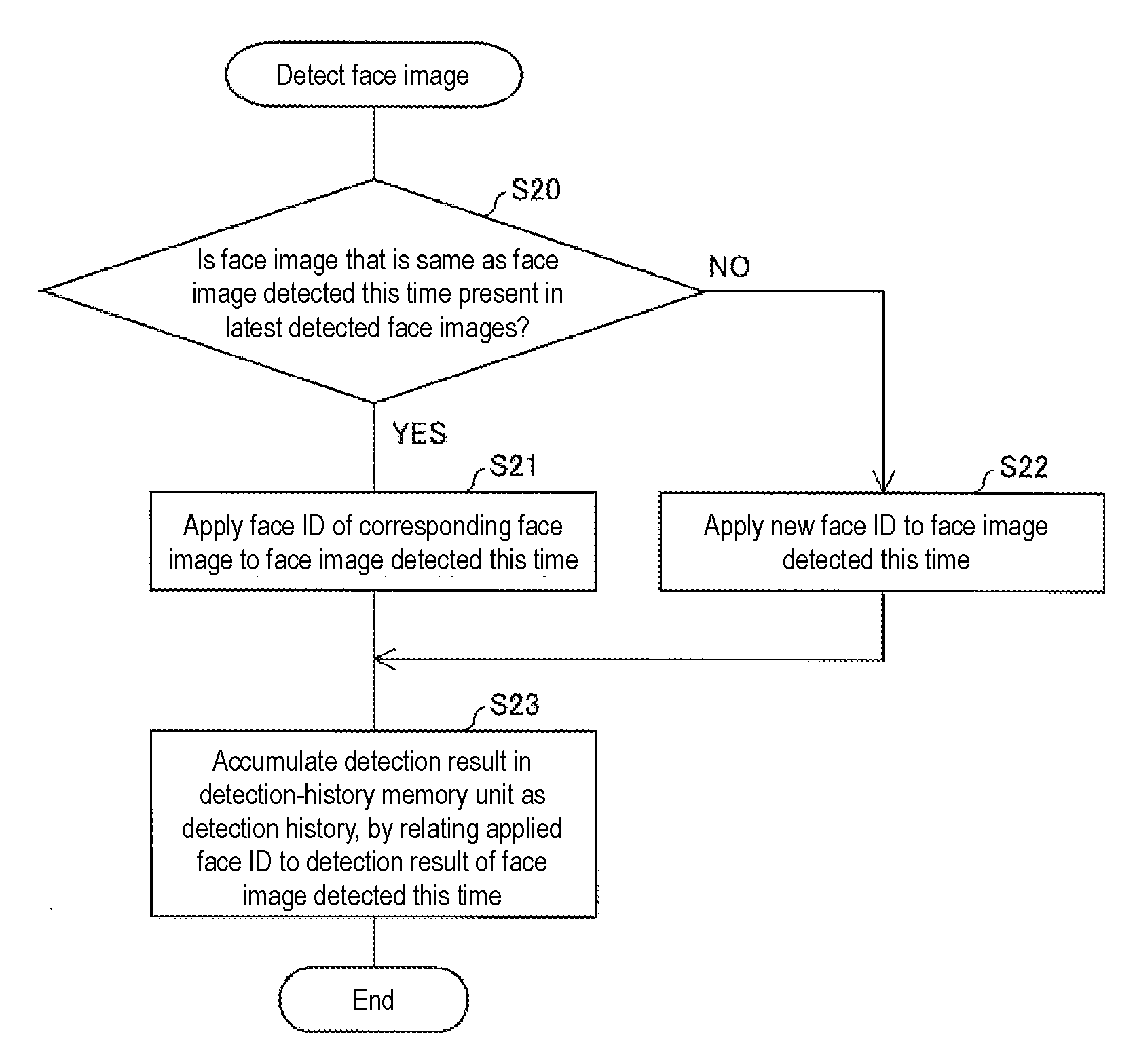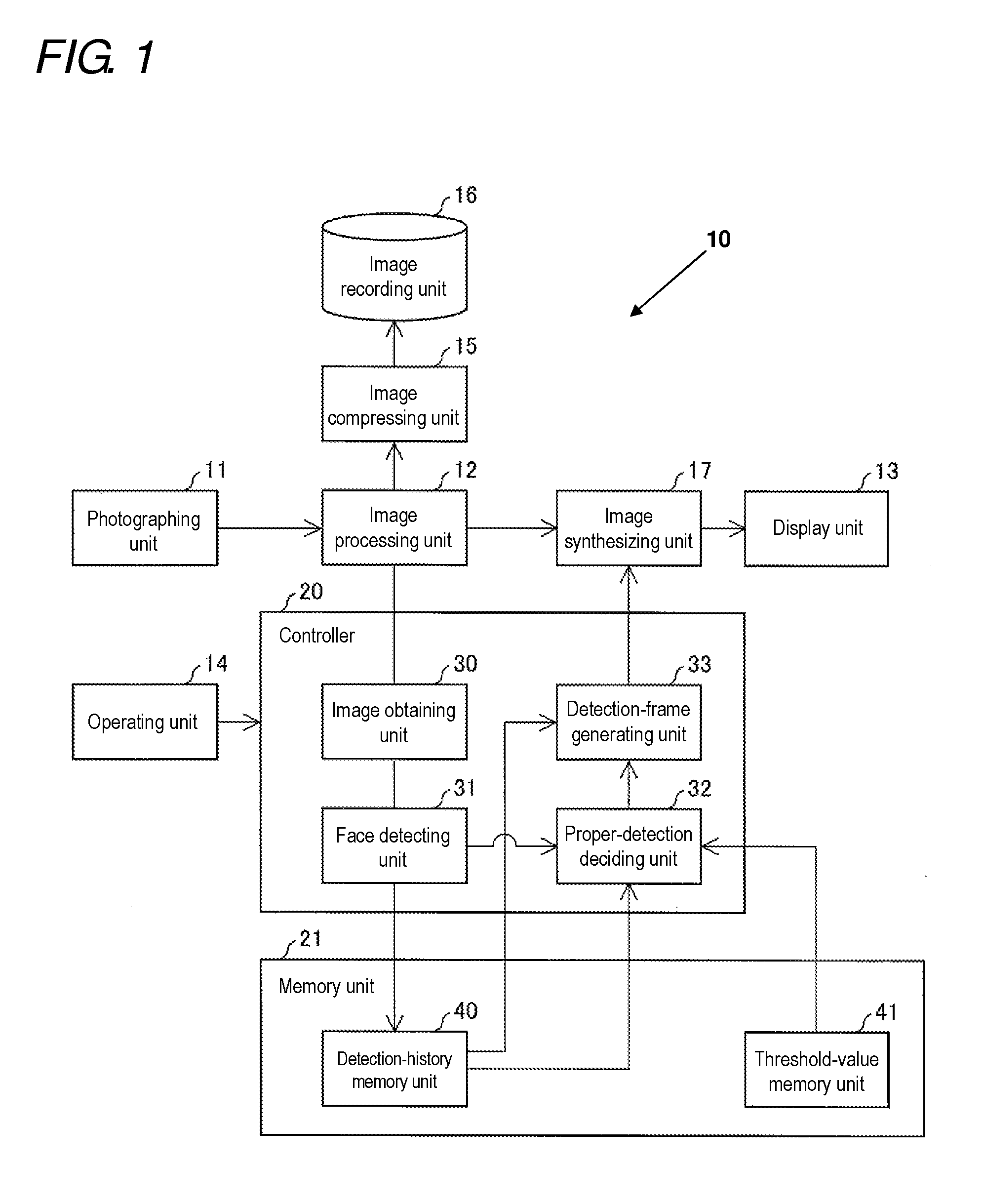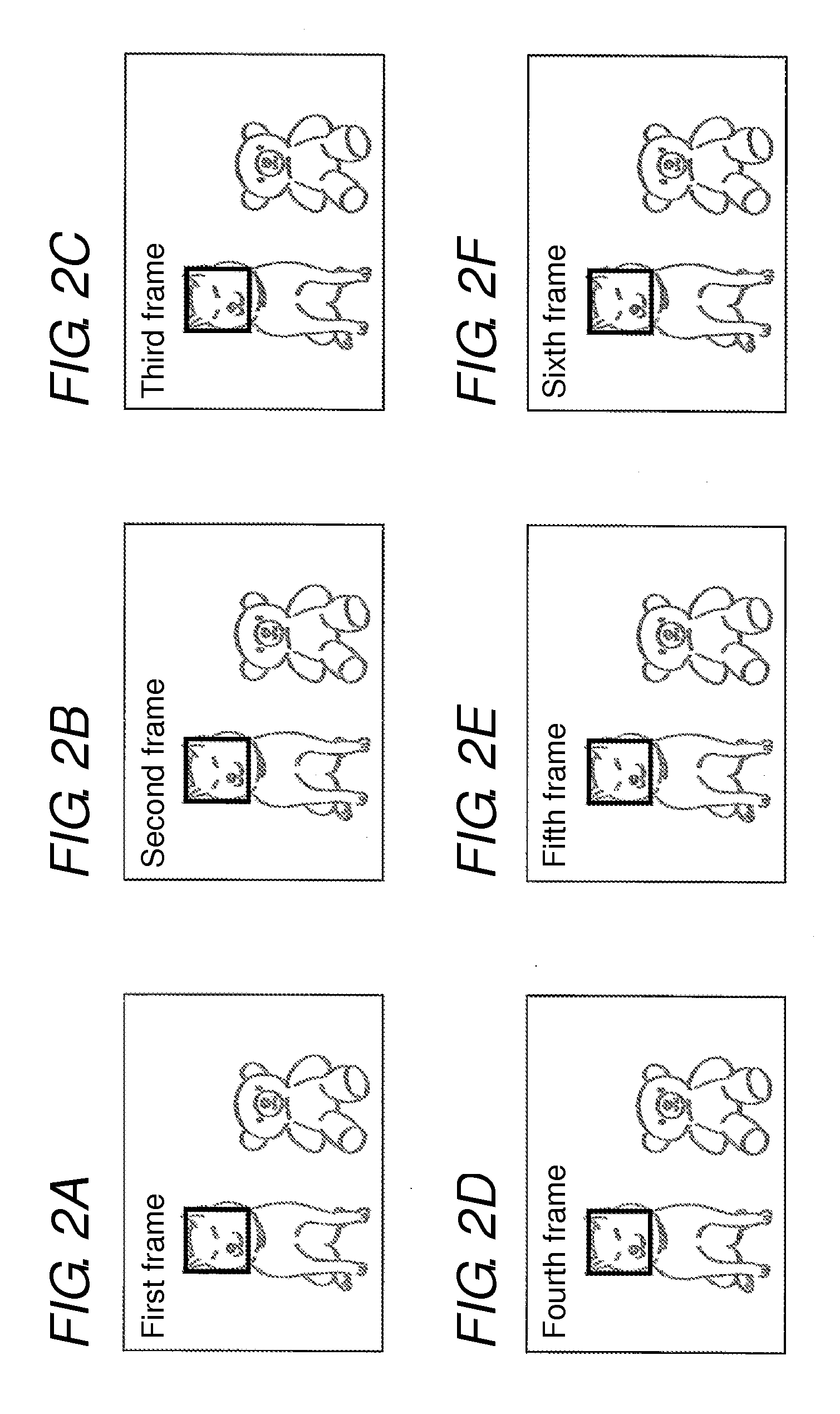Target-image detecting device, control method and control program thereof, recording medium, and digital camera
a technology of target objects and detection results, applied in color televisions, instruments, television systems, etc., can solve problems such as poor visual quality, temporary failure of detection, and erroneous detection, and achieve the effect of preventing the output of a detection result of an erroneously detected target obj
- Summary
- Abstract
- Description
- Claims
- Application Information
AI Technical Summary
Benefits of technology
Problems solved by technology
Method used
Image
Examples
example 1
(Example 1)
[0061]Next, an example of the operation of the proper-detection deciding unit 32 is described with reference to FIG. 5. FIG. 5 is a view showing, in a table form, an example of data that is input and output by the proper-detection deciding unit 32 for each frame. The example of FIG. 5 corresponds to the example of FIGS. 2A-2F.
[0062]In the example shown in FIG. 5, the face detecting unit 31 applies ID1 as the face ID to the face image of the dog that is detected in the first frame and that is traced afterward. The face detecting unit 31 applies ID2 as the face ID of the face image of the stuffed toy of the bear, when the face image is detected in the second frame. Since the face image is not able to be detected in the third to fifth frames, the face image cannot be traced. Therefore, when the face image is detected in the sixth frame, ID3 that is different from ID2 is applied as a face ID.
[0063]In the example of FIG. 5, the proper-detection deciding unit 32 does not output...
example 2
(Example 2)
[0064]Next, another example of the operation of the proper-detection deciding unit 32 is described with reference to FIG. 6. FIG. 6 is a view showing, in a table form, an example of data that is input and output by the proper-detection deciding unit 32, for each frame. In the example of FIG. 6, when a face image detected this time is also detected in latest one frame, that is, when a face image is detected continuously in two frames, the proper-detection deciding unit 32 decides that the face image is a properly detected face image.
[0065]In the example of FIG. 6, ID1 is input in the first frame, but latest one frame is not present. Therefore, the proper-detection deciding unit 32 does not output any face ID, by deciding that a face image has not been detected. In the second, fourth, sixth, eighth, tenth, and twelfth frames, since no face ID has been input as undetected, the proper-detection deciding unit 32 does not output any face ID, by deciding that a face image has no...
example 3
(Example 3)
[0069]Next, an example of the operation of the proper-detection deciding unit 32 according to one or more embodiments of the present invention is described with reference to FIG. 7. FIG. 7 is a view showing, in a table form, an example of data that is input and output by the proper-detection deciding unit 32, for each frame. In the example shown in FIG. 7, when a face image detected this time is detected in at least two frames out of latest four frames, the proper-detection deciding unit 32 decides that the face image is a properly detected face image.
[0070]In the example of FIG. 7, latest two frames are not present in the first and second frames. Therefore, the proper-detection deciding unit 32 does not output any face ID, by deciding that a face image has not been detected. In the third and fourth frames, ID1 is input in only one frame out of latest frames, and therefore, no face ID is output. As a result, the proper-detection deciding unit 32 does not output any face I...
PUM
 Login to View More
Login to View More Abstract
Description
Claims
Application Information
 Login to View More
Login to View More - R&D
- Intellectual Property
- Life Sciences
- Materials
- Tech Scout
- Unparalleled Data Quality
- Higher Quality Content
- 60% Fewer Hallucinations
Browse by: Latest US Patents, China's latest patents, Technical Efficacy Thesaurus, Application Domain, Technology Topic, Popular Technical Reports.
© 2025 PatSnap. All rights reserved.Legal|Privacy policy|Modern Slavery Act Transparency Statement|Sitemap|About US| Contact US: help@patsnap.com



